Contents
The Rocket tomato was bred by breeders in 1997, two years later the variety passed the state registration. For several years, these tomatoes have gained wide popularity among farmers and summer residents. Below are the features, photos, yields and reviews on the Rocket tomato.
The variety is recommended for cultivation in the southern regions, where planting is carried out in open ground. In the central strip, these tomatoes are covered with a film. In areas with a cold climate, the variety is planted in a greenhouse.
Characteristics of a variety
The description and characteristics of the Rocket tomato variety are as follows:
- determinant bush;
- mid-season variety;
- height of tomatoes – no more than 0,6 m;
- the first inflorescence appears above the 5th leaf, the next ones are formed after 1 or 2 leaves;
- fruit ripening takes 115 to 125 days after planting.
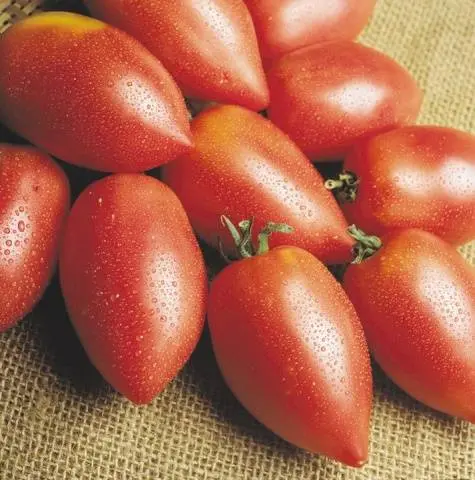
The fruits of the Rocket variety have a number of features:
- elongated shape;
- smooth, glossy surface;
- average density;
- when ripe, the fruits become red;
- weight 50 g;
- 4-6 tomatoes are formed in one brush;
- dense pulp;
- 2-4 chambers in fruits;
- tomatoes contain from 2,5 to 4% sugars;
- good taste.
Productivity of the variety
According to the description and characteristics, the Rocket tomato variety has a universal purpose. It is used in the daily diet for salads, appetizers, first courses and side dishes.
The variety is ideal for home canning. The fruits are small in size, they can be pickled and salted whole or cut into pieces. Tomatoes tolerate transportation over long distances without loss of commercial properties.

Landing order
Rocket tomato is grown by seedling method. At home, seeds are planted, and when sprouts appear, the necessary conditions are provided for the tomatoes. The grown tomatoes are transferred to a permanent place.
Getting the seedlings
Rocket tomato seeds are planted in March. The soil for tomatoes is prepared in the fall by combining humus and earth from the garden plot in equal proportions.
The resulting mixture is recommended to be subjected to heat treatment. To do this, it is placed for 15 minutes in the oven or microwave. The treated soil mixture is left for 2 weeks to ensure the development of beneficial bacteria in it. If purchased soil is used, then it can not be processed.
Low containers are prepared for tomatoes, which are filled with earth. The seeds are arranged in rows with a step of 2 cm. A layer of peat 1 cm thick is laid on top and watered with a strainer.
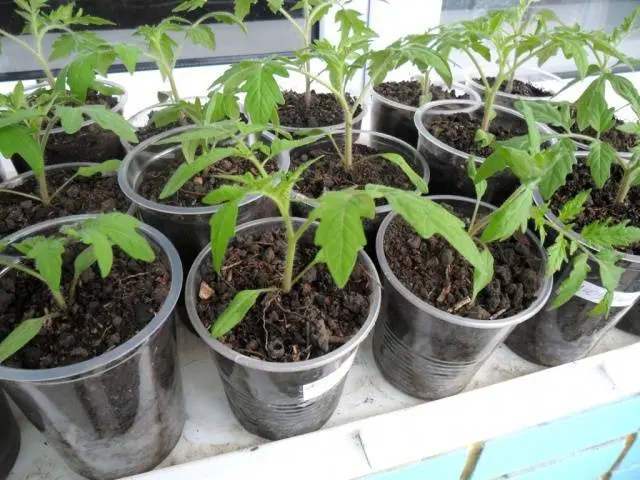
The container is covered with a film or glass, after which it is cleaned in a dark place with a temperature of 25 degrees. When sprouts appear, the shelter is removed, and the tomatoes are moved to a well-lit place. Over the next week, the tomatoes are provided with a temperature of 16 degrees, then it is raised to 20 degrees.
When 2 leaves appear, tomatoes dive in separate containers. As the soil dries up, the plants are watered. For 12 hours, landings should be well lit.
Greenhouse landing
Tomato Rocket is transferred to the greenhouse 2 months after germination. The variety is suitable for growing indoors under film, polycarbonate or glass.
The greenhouse should be prepared in the fall. First, the upper soil layer (up to 10 cm) is removed, in which fungal spores and insect larvae spend the winter. The remaining soil is dug up, humus or rotted compost is introduced.
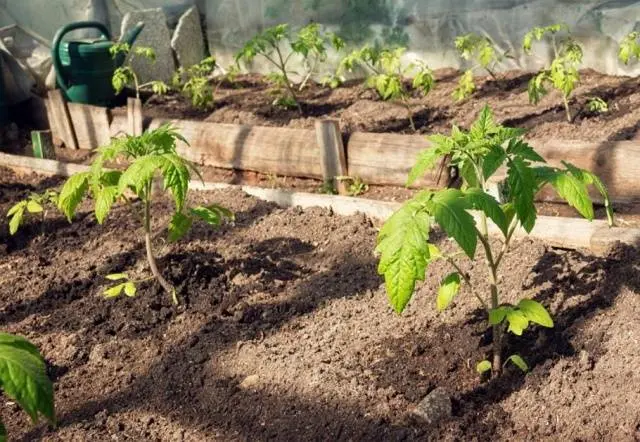
Bushes are placed in prepared holes, an earthen lump is not broken. Then the roots are sprinkled with earth, which is well tamped. Tomatoes need to be watered abundantly.
Landing in open ground
Beds for growing tomatoes should be prepared in the fall. The earth is dug up and compost is added. In the spring, it is enough to carry out deep loosening of the soil.
For several years in a row, tomatoes are not planted in one place. The best predecessors for them are root crops, onions, garlic, cabbage, legumes.
Rocket tomatoes are placed after 40 cm. If several rows are organized, then 50 cm are measured between them. After planting, the tomatoes need to be watered and tied up. If frosts are expected in the region, then the first time after planting, the tomatoes are covered with a film or agrofiber.
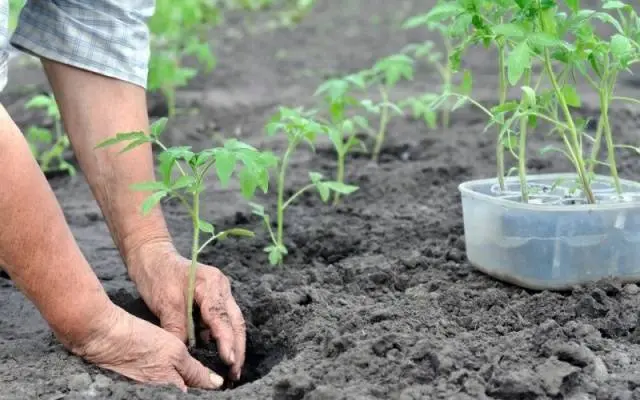
Features of care
Variety Rocket needs some care, which includes watering and fertilizing. If the rules of care are violated, fruit cracking and plant growth slow down. To obtain the maximum yield, a bush is formed.
Rocket tomatoes are disease resistant. If you do not allow an increase in humidity and thickening of plantings, then the spread of phytophthora, various types of rot and other diseases can be prevented.
Watering tomatoes
The normal development and high yield of Rocket tomatoes are ensured with moderate moisture application. For irrigation, warm water is taken, which has settled in barrels.
Under each bush of the Rocket variety, 2-5 liters of water are required, depending on the stage of development of the bush. After planting, the tomatoes are not watered for a week. During this time, the rooting of plants occurs.
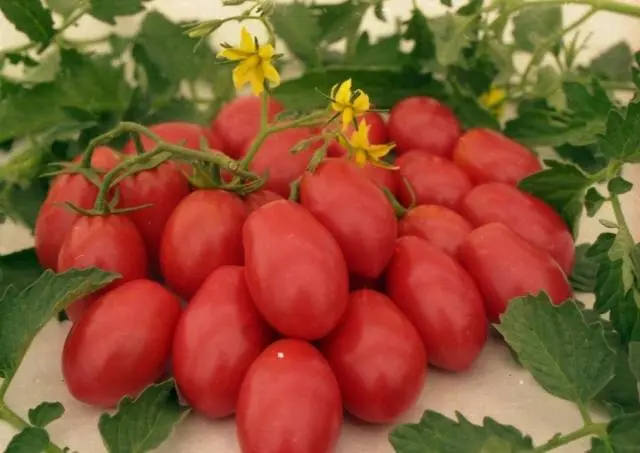
Before the formation of inflorescences, tomatoes are watered twice a week, the volume of moisture introduced is 2 liters. With active flowering, tomatoes need only one watering during the week in the amount of 5 liters. When the fruiting period begins, they return to the previous irrigation scheme: 2-3 liters twice a week.
Watering is done in the morning or in the evening, so that moisture has time to soak into the ground. It is important to prevent water from getting on the stems and leaves so as not to burn the plants.
Feeding
For active growth, Rocket tomatoes require top dressing. It is best to use substances containing phosphorus and potassium for these purposes. Phosphorus contributes to the formation of a healthy root system. Due to potassium, the taste of tomatoes improves, and the plants themselves become more resistant to diseases and weather conditions.
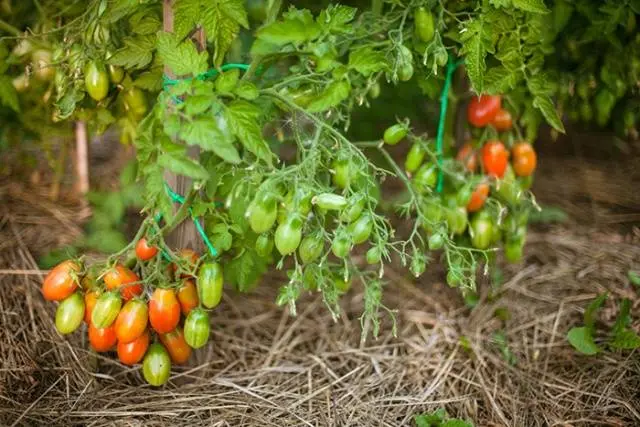
Tomatoes are watered with a solution of superphosphate, which is prepared by dissolving 40 g of this substance in 10 liters of water. Top dressing is applied under the root of the plants. A week later, a solution of potassium sulfate is prepared and used in the same way.
Root top dressing can be alternated with spraying tomatoes. For sheet processing, a solution is prepared containing 6 g of boric acid and 20 g of manganese sulfate. The components are dissolved in 20 liters of water.
Pinching and tying
Variety Rocket is distinguished by the compact size of the bush. The tomato can not be stepchildren, however, it is recommended to eliminate stepchildren before the formation of the first inflorescence. Shoots up to 5 cm long, growing from the leaf sinus, are removed manually.
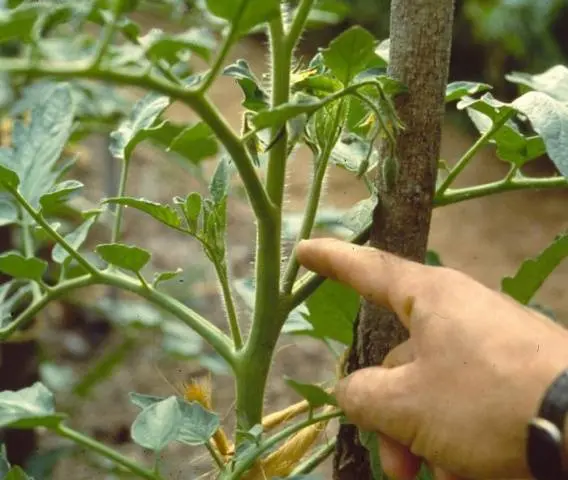
When grown in open areas, the bush of the Rocket variety is formed into 3-4 stems. If tomatoes are planted in a greenhouse, then 2-3 stems are left.
It is advisable to tie the bush to a support so that an even and strong stem is formed. Due to tying up, the bush does not break under the weight of tomatoes.
Reviews of gardeners
Conclusion
Variety Rocket refers to undersized and compact tomatoes, but gives a good harvest. A feature of the variety is its sensitivity to the regime of watering and fertilizing. Rocket tomatoes are used for canning, they have good taste and disease resistance.









